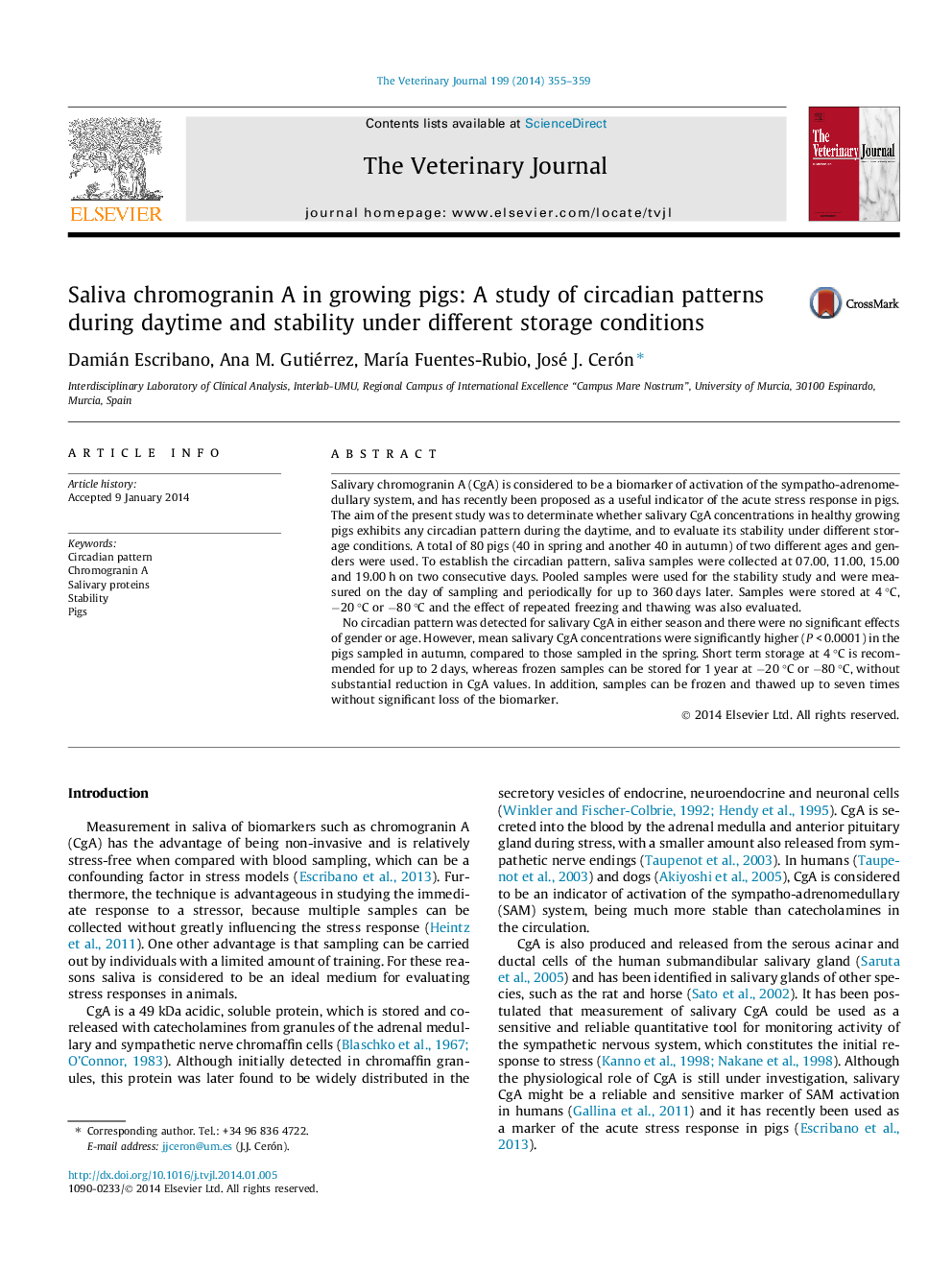| کد مقاله | کد نشریه | سال انتشار | مقاله انگلیسی | نسخه تمام متن |
|---|---|---|---|---|
| 2464037 | 1111770 | 2014 | 5 صفحه PDF | دانلود رایگان |

Salivary chromogranin A (CgA) is considered to be a biomarker of activation of the sympatho-adrenomedullary system, and has recently been proposed as a useful indicator of the acute stress response in pigs. The aim of the present study was to determinate whether salivary CgA concentrations in healthy growing pigs exhibits any circadian pattern during the daytime, and to evaluate its stability under different storage conditions. A total of 80 pigs (40 in spring and another 40 in autumn) of two different ages and genders were used. To establish the circadian pattern, saliva samples were collected at 07.00, 11.00, 15.00 and 19.00 h on two consecutive days. Pooled samples were used for the stability study and were measured on the day of sampling and periodically for up to 360 days later. Samples were stored at 4 °C, −20 °C or −80 °C and the effect of repeated freezing and thawing was also evaluated.No circadian pattern was detected for salivary CgA in either season and there were no significant effects of gender or age. However, mean salivary CgA concentrations were significantly higher (P < 0.0001) in the pigs sampled in autumn, compared to those sampled in the spring. Short term storage at 4 °C is recommended for up to 2 days, whereas frozen samples can be stored for 1 year at −20 °C or −80 °C, without substantial reduction in CgA values. In addition, samples can be frozen and thawed up to seven times without significant loss of the biomarker.
Journal: The Veterinary Journal - Volume 199, Issue 3, March 2014, Pages 355–359